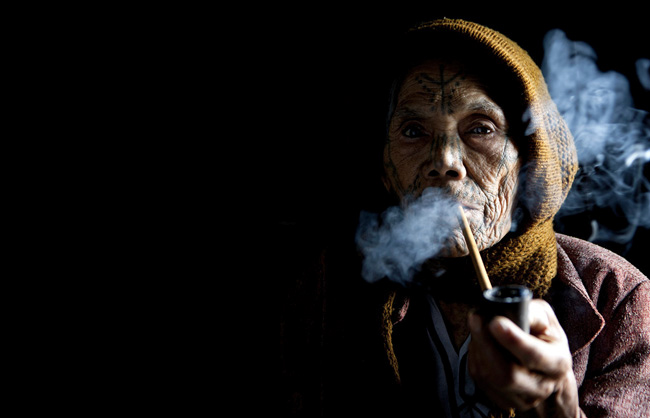Myanmar (Burma)
The Chin of Burma
The Chin of Burma
Where: Myanmar (Burma)
When: 2012
The Chin people are an ethnic group of Tibetan-Mongolian origin living mainly in western Myanmar’s Chin State. Without written record history, their traditions have been passed down orally for centuries. They are believed to have arrived in Burma around the 9th or 10th century, eventually settling in the present Chin state by the 14th century.
For generations, Chin women practiced the ancestral custom of facial tattooing—a painful rite of passage marking the transition into adulthood. This ritual was officially banned by the military regime in the 1960s. Over time, the practice also declined as many Chin communities converted from animism to Christianity under the influence of missionaries.
Several legends surround the origins of the tattoos. One popular tale claims they were meant to “uglify” women to protect them from being abducted by Burmese kings. However, many Chin women believe this story was invented more recently as a tourist attraction. According to elder women who remember the older traditions, the tattoos symbolized beauty, courage, and clan identity. Each of the 50 Chin subgroups had its own distinct pattern.
Today, only a few elderly women still bear these traditional tattoos. While they remain proud of their heritage, many do not wish the practice to continue, fearing young girls would face ridicule in the modern world. With the custom having ceased two generations ago, this unique tradition is nearing extinction.
Ironically, its disappearance has attracted visitors to this remote, military-controlled region of Burma. The tattooed elders—often ignored by the central government—now use their distinctive appearance to earn modest income from tourism. Though visitor numbers remain low, the donations help support local schools and medical facilities, offering some relief after decades of state neglect.



















